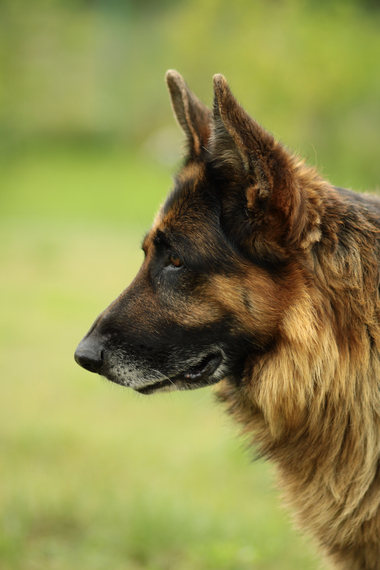In 1989, a 44-year-old woman went to the dermatology clinic at King's College in London. She was concerned about a mole. Well it's more accurate to say that the visit was prompted by her dog's concern. The dog, a cross between a border collie and a doberman, would incessantly sniff this mole. The pooch seemed oblivious to her other moles, always zeroing in on this particular one even when her trousers hid it from view.
The dog's unusual behavior persisted for several months and culminated in it attempting to bite off the mole. This finally drove the woman to have the skin lesion assessed. A malignant melanoma was diagnosed and removed, saving the woman's life.
Howell Williams and Andres Pembroke, the attentive physicians who treated this woman, were fascinated and published the case in The Lancet. In their report they speculated about the possibility that malignant tumors emit specific odors that can be detected by the powerful canine olfactory system.
This launched a new approach to cancer diagnosis. Since this pioneering case, investigators have reported the detection of bladder, lung, breast, ovarian and skin cancers by dogs. However flaws in these studies yielded mixed results. Canine diagnosis floundered in the backwaters of alternative medicine.
Until now.
Italian researchers recently demonstrated that trained dogs can detect prostate cancer almost unerringly. Dog handlers from the Italian Ministry of Defense trained two German shepherds to detect the smell of prostate cancer by sniffing urine samples from men with the disease. The dogs were then tested. In fact, they were tested 677 times.
677 urine samples were used, 320 from prostate cancer patients and 357 from cancer-free men. The dog-diagnosticians correctly identified cancer urine samples 99 percent of the time. The cancer-free samples were correctly identified 97 percent of the time.
To appreciate the enormity of this accomplishment, let me provide some perspective.
Prostate cancer is the second most common cancer in men and the second most common cause of cancer death in men. Because it rarely causes symptoms, it is usually diagnosed by blood test (prostate specific antigen, PSA). PSA can be elevated by many things including irritation (very common), infection or cancer of the prostate. So, as the name implies, it is prostate-specific but not cancer-specific. An elevated PSA could be the result of cancer or a long bike ride that irritated the prostate. On the other hand, a normal PSA does not guarantee the absence of cancer. In about 15 percent of men with normal PSA, biopsy finds prostate cancer.
Typically, an elevated PSA triggers a rectal exam and prostate biopsy. Prostate biopsies (a transrectal event) are no walk in the park. Complications associated with such procedures can include bleeding, infection, erectile dysfunction and even death. That's a lot to risk for a test that affords a meager 30 percent detection rate.
Studies also suggest that PSA screening does not save lives. For all these reasons many health organizations, including the American Cancer Society, have stopped advocating PSA screening. A screening test with near perfect accuracy and no side-effects would transform the management of this common cancer.
Visualize the instrument that provides such remarkably sensitive measurements. The image of an ultramodern studio apartment-sized computer adorned with blinking LED indicators beeping to a spectacled clinical attendant in her starched white coat might come to mind. This reflects our belief that such an instrument would have to be both modern and manmade.
Wrong.
Think shiny wet nose attached to a hairy four-legged, tail-wagging, generally friendly creature that's been domesticated for about 20 thousand years.
So back at the kennel...
Dogs' sense of smell has been estimated to be 10,000 to 100,000 times more powerful than our own. Scientists in the field came up with a visual analogy. What a human can see at a third of a mile, a dog could see (as well) more than 3,000 miles away.
Part of this superiority stems from the number of olfactory receptors. Dogs possess 300 million receptors in their noses compared to about 6 million in humans. The olfactory center in a dog's brain is also 40 times larger than the human equivalent. This allows the detection of some odors when present in parts per trillion, a stat more commonly associated with sharks and blood.
The canine capacity to help detect prostate cancer will surely be replicated with other cancers. But for now, dogs remain man's best friends.
